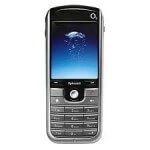
During AdWeek in Toronto, Google’s own Jesse Haines, Group Marketing Manager at the big media mogul, introduced “How to Go Mo in 2012” to emphasize the importance of utilizing mobile.
Mobile is a market that every marketer should be appropriating in their campaigns, as mobile technology is becoming the fastest growing technology among consumers.
Haines took the audience through four steps in how to mobilize mobile:
1. Embrace the Nonline World
Android and iPhone apps act as brand extensions to deepen relationships and build loyalty. QR codes act as silent salespeople. Google Wallet is handling your credit card information to complete transactions. All of these new gadgets have become the new and hip way of communicating brand identities and messages.
Several airlines, including Delta for example, places QR codes as passengers plane tickets to be accessed on their mobile devices, without the need to print a boarding pass. Mobile is making it easier for consumers to access information on the fly, without the hassle of performing monotonous, everyday tasks.
2. Cover the Basics
According to Google research, 79% of large advertisers do not have mobile optimized landing pages. What these advertisers do not realize is that mobile search is exploding and has increased by five times in the past few years.
Haines shared some other interesting statistics: 30% of restaurant searches are made on mobile devices and 25% of search on mobile is movie-related. Moreover, 40% of users who visit a mobile-friendly site go to a competitor’s site, while 11% screamed at their phones from having difficulty accessing a website.
One way to analyze and evaluate a business’s website on a mobile device is through howtogomo.com. Google offers a measurement tool called the gomometer, where users can type in their business website and see how it renders on mobile devices. The gomometer caters to both small and large businesses and at different prices and can take up to merely 30 minutes to upload.
3. Make meaningful connections
Haines contends that mobile offers another route for clients to connect with their customers. Through interactive click-to-calls and an emphasis on hyper-local content, engagement has become a desirable feature for mobile display.
Take the Angry Birds game as the more popular example. This interactive game became so entertaining for consumers to play with on their iPads that the company extended the brand connection to make plush toys and sell them in stores.
4. Access more than one screen
Tablets have also become a desirable commodity in the mobile realm. According to a PEW Internet research study, tablet ownership doubled over the holidays. The tablet is the fastest growing technology used for entertainment purposes as opposed to work purposes, since it is not often taken outside the home (except for travel).
According to another Google study, tablets and mobile usage increase during prime time hours (whereas desktop usage peaked in mid-morning and dropped during prime time hours).
In the same study, Google found that 46% of mobile users searched for content that was not related to TV. What this means for marketers is that they need to be on all sorts of platforms (both TV and mobile), combining the best communication platforms to increase interactivity.
Mobile usage is growing at a fast pace. It is up to marketers to solidify the companionship between mobile devices and the people that carry them. Marketers need to provide multiple outlets to accompany users wherever they are going, and mobile delivers in every category.
If you want more information on how to appropriate mobile devices for your marketing plan, do not hesitate to ask for our help.
